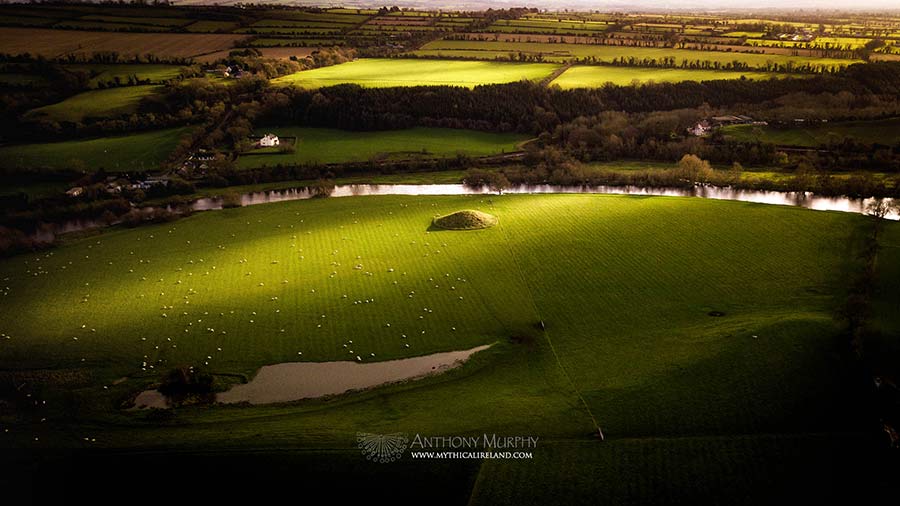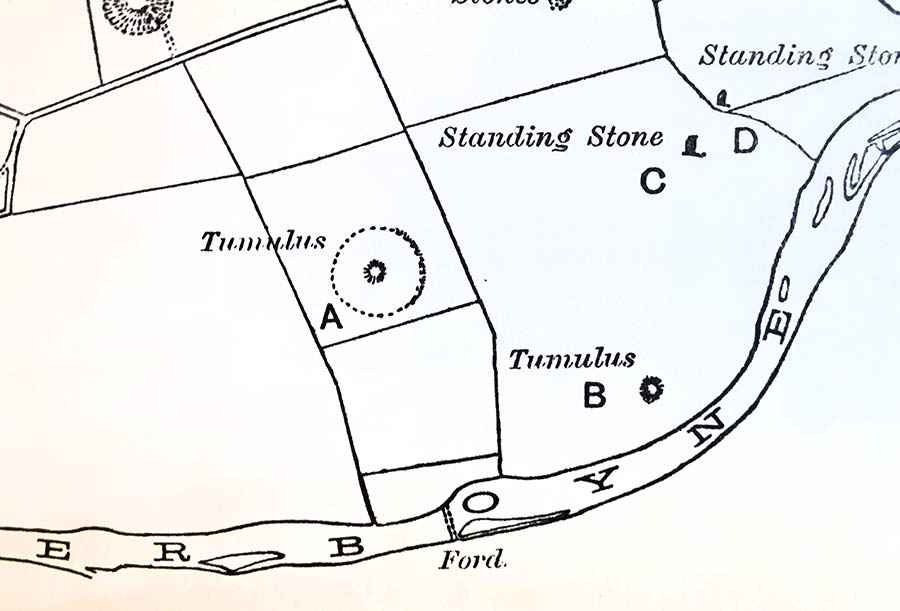
A sunbeam illuminates The Dagda's Mound
We have a tendency to view Brú na Bóinne and places like Tara and Rathcroghan as archaeological landscapes, which they are, of course. But perhaps when we use such rigid and functional labels we forget that these are also mythological landscapes, places associated with great deities and personages and characters and warriors.
In the short anecdote De Gabáil int Síde (The Taking of the Sídhe or otherworld mound), the chief deity Dagda distributes the mounds to the Tuatha Dé Danann, reserving Síd in Broga (Newgrange) for himself. His son Oengus, the Mac Óc, petitions him for a dwelling but the Dagda tells him "I have nothing for you. I have finished the distribution". Oengus asks him for Síd in Broga for a night and a day, which Dagda grants him. However, next day he refuses to leave because, "the whole world is day and night and that is what has been granted me". The Dagda is forced to yield the great Brú to his son.

There was a long-standing tradition about the mound in the main photograph, which was taken by drone at Newgrange Farm a while back. This mound is labelled unremarkably as Mound B or Tumulus B on archaeological maps. But long before these archaeological charts with their functional and disempowering lettering conventions, that mound was the subject of an old belief, and had a name. It was known, even up until the 19th century, as the Dagda's Mound. Tradition had preserved an idea, perhaps emerging from the ancient story of De Gabáil int Síde, that this was the mound to which Dagda went after his son Oengus took Síd in Broga (Newgrange) from him.
In calling it Mound B, we deprive it of that tradition. We know from various manuscripts containing the Dindshenchas (lore of the ancient places) that in former times all the monuments at Brú na Bóinne had names and were associated with deities or people or marvelous animals or creatures. We should, I think, make every effort to restore the old names to these monuments and archaeological remnants, lest their romance is extinguished in the bland text of some academic monologue.

Looking at this photo, I see Dagda (as a solar deity) shining his light upon his own mound. And suddenly the landscape assumes a magical, austere and powerful aura. It is no longer a vapid, vacuous heap of earth. It is a sídhe, a hallowed and inscrutable sanctuary from which the deities emerge from an old but ever-present otherworld into this one.

Let it be known as "The Dagda's Mound". Let's take Mound B off the map lest all our oldest lore be willfully attenuated or lost altogether to the deadening hand of the archaeological cartographer.
Anthony

